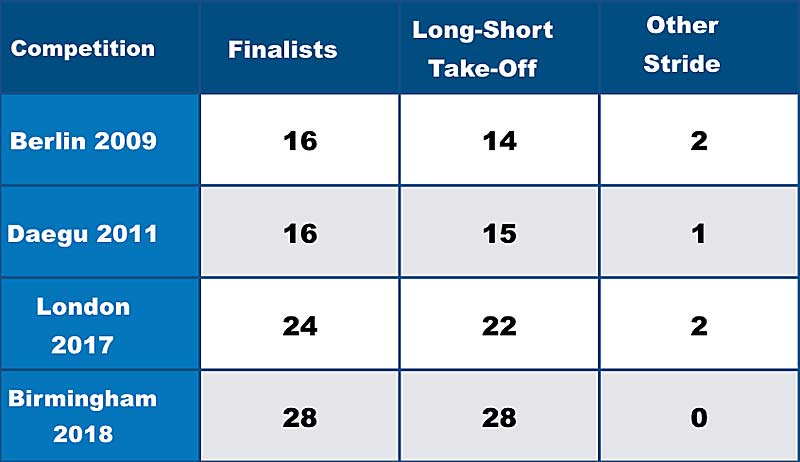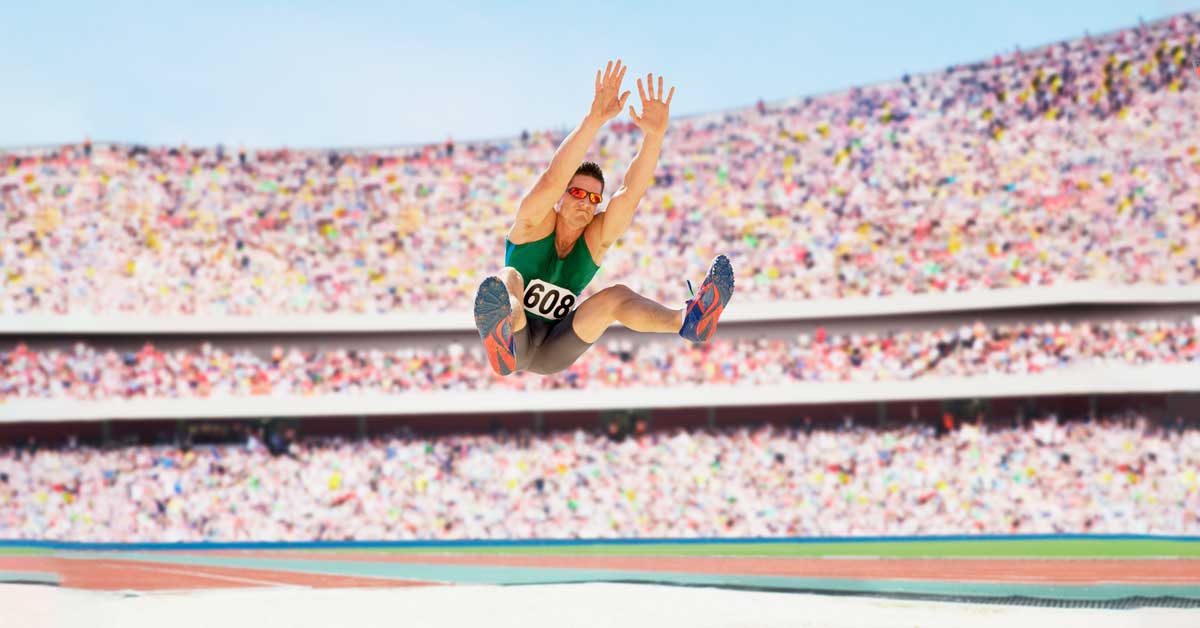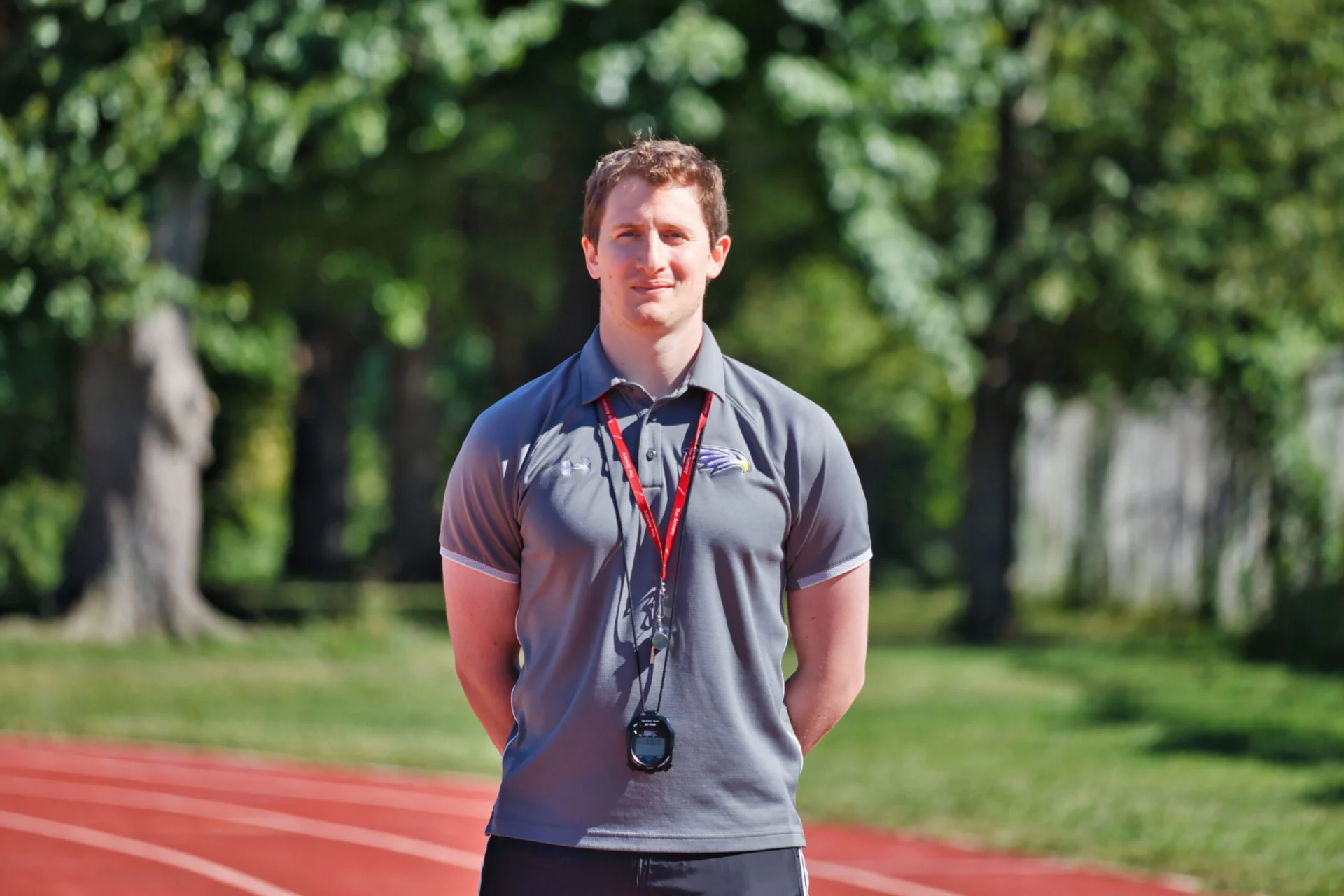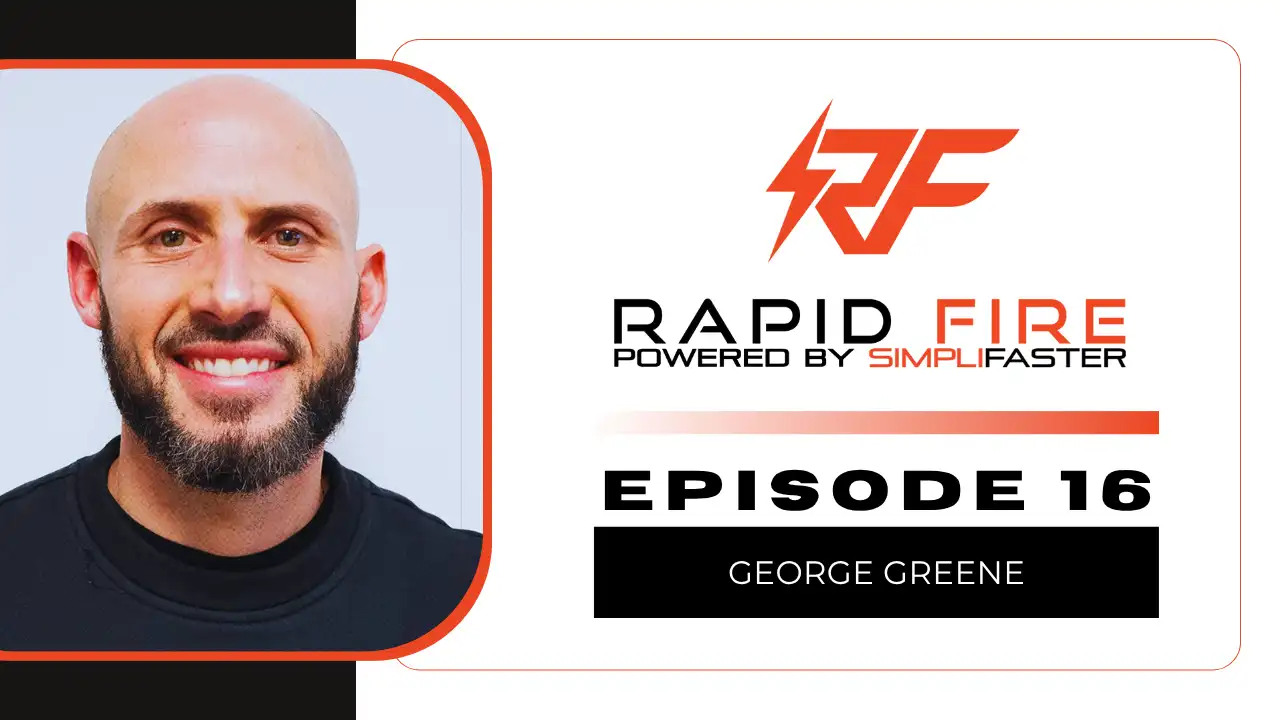[mashshare]
In 2017, World Athletics (formerly IAAF) published its first biomechanical reports since 2009. I do not know if any other reports were published for 2010-2016, but it was the Berlin 2009 World Championship data where I encountered the intersection of athletics and technology for the first time. In December 2015, my instructors for USATF Level 1 Coaching Education shared a few resources with my cohort to guide our young, hopeful careers. On Saturday night, as my subway banged its way back uptown, there I sat, squeezed and uncomfortably contorted between other passengers, with my eyes glued to my smartphone. The USATF lecture slides on physiology and technique from earlier in the day were good, but the Berlin 2009 World Championships Biomechanical Analysis of the Long Jump was mesmerizing.
I was star-struck. And I admit it took me a while to look beyond the still frame photography. The reports are truly a treasure trove of information. Whether you’re a coach, exercise physiologist, or an athlete, the biomechanical reports offer our community a better way to understand the limits of human performance. A team of kinesiologists analyzes the raw data from each event’s finalists and produce the reports, which detail everything from stride lengths to instantaneous velocities. The most striking observation I made was the relative stride pattern for long jumps at take-off. Out of 84 male and female elite long jumpers from 4 World Championships, 79 finalists relied on a long-short stride pattern to produce their best jumps.
If coaches want their athletes to develop this skill, they need to teach the correct stride pattern at take-off.
Not every report provides data we can translate into practice drills, but in the case of long jump, the reports are a valuable resource. As you might expect, faster athletes produced farther jumps, meaning the approach on the runway is a necessary skill to develop. As I’ve written previously, when an athlete demonstrates a skill 85% of the time, it will translate to their performance. Unfortunately, this doesn’t mean they’ll win the competition.
When my athletes take a good jump, I usually freeze up. I’m always looking for something to correct, but I quickly realize all I need to say is, “Good! Let’s do that again.” Then, a naturally gifted athlete with shoddy technique flies down the runway, hits the board just right on pure chance, and jumps way farther than my athlete. Maybe you can relate. This is common in high school sports, and college, too. We all know what it feels like to lose a competition to one of these athletes. The drive home afterward leaves you questioning your coaching. However, I refuse to believe this nullifies the hard work we invest day-in and day-out developing an unathletic freshman into a competitive senior athlete who scores points at the conference championship. Yet, in the moment, the loss certainly makes it feel like our coaching has been all for naught.
On the world’s stage, shoddy technique is a very unusual sight—for the long jump. I’m encouraged that the biomechanical reports don’t show evidence of such an upset. No medals were awarded to athletes who competed with an ineffective stride pattern at take-off.
In the long jump, the correct stride pattern at take-off includes an elongated penultimate stride followed by a shorter stride. This mechanic lowers the hips and effectively prepares the body to use its glutes, hamstring, quad, and calf muscles in the last stride. While I advocate adopting the evidence-supported stride pattern in the generalized technical model for the long jump, the wider coaching community continues to debate the technique.
Long-Short Take-Off in Long Jump Practice
Speed masks skill proficiency. So take it out of the equation. An athlete’s ability to use a long-short stride pattern is most evident from a shorter approach when speed is not a factor. I recommend a stride-stride-long-short jump drill to teach this skill.
Begin with your athlete standing feet together. Have them take a step back with the right foot, lean backward slightly, and raise their right hand. They should initiate the sprint with two regular strides, followed by a relatively longer penultimate stride and then a much shorter, flat-foot contact step to jump off the ground. It’s your job to watch their stride pattern and correct their mistakes. Here are some common errors:
-
- If an athlete overstrides either step, they’ll go short-long or long-long. Let them try again.
-
- If they go long-short but the jump seems flat, they probably didn’t have good posture at take-off. The right cue is “Chest up!”
-
- Athletes may take too few or too many strides. Let them walk out their strides and try again.
In all circumstances, be honest with your athlete. Tell them what happened. Model the correct stride pattern for them and help them feel the motions pace-by-pace or at a walking pace. When athletes become more proficient at this skill, move them back and have them take four strides before going long-short.
Video 1. Coach Kaminsky demonstrates an effective long-short stride pattern at takeoff, compared with patterns that he does not recommend.
In addition to teaching the skill itself, you must teach awareness of the skill. Athletes need to know what the physical movements feel like as they drill the skill—both effectively and poorly. Only then can they make adjustments in response to your feedback.
In a sport where fast means everything, sometimes a slower, shorter approach has great value. Coordination may be more challenging on a smaller scale, but it’s more valuable for skill acquisition. Slower execution also allows you to observe your athletes’ movements more easily.
Biomechanical Analysis
Each quarter, USATF publishes its magazine Track Coach. I read every issue, and in the latest, Editor-in-Chief Russ Ebbets argues in support of technical models rooted in the fundamental skills for each event. Without reservation, I believe that a generalized technical model for every event is necessary and possible. As athletes progress, more nuanced technical considerations may become more critical. But any new considerations should build upon the generalized technical model, which remains reinforced by regular practice.
For example,athletes can adjust the relative length of their penultimate stride while maintaining the long-short stride pattern. If the average stride length is 1.50m, penultimate is 1.70m, and the last stride is 1.40m, they can adjust the penultimate stride to 1.75m while keeping the other stride lengths the same. Any such adjustment would require frequent reinforcement in practice to translate into performance.
In the end, it’s just a numbers game. One competition of 7 vs. 1 might not pass a test of statistical significance, but 79 vs. 5 provides a more reasonable justification for an accepted stride pattern. Last year, McCosker et al. (2019) analyzed the same World Athletics reports for a similar purpose. They determined that training design needs “to move beyond reductionist approaches to studying long jumping” because the current analysis is too frequently “provided by isolated biomechanical analysis of single jumping events.” I agree with the McCosker study. We cannot ignore the data. World Athletics collects a vast amount of data from elite competitions, and we need to use it to inform training design whenever possible, wherever appropriate.
World Athletics collects a vast amount of data from elite competitions. We need to use this data to inform training design. Share on XI’m not a student of kinesiology or exercise science—my degree is in geology, and now I teach 7th and 8th grade. One of the most important lessons learned in middle school science is that a claim must be supported by convincing evidence for that claim to be accepted. Even when some small amount of evidence, like oddball outliers, refutes the claim, we must still accept the claim because a larger, more convincing body of evidence supports it. Just like long jumpers who go short-long and still make it to the finals of a world championship, we may not be able to explain why the outliers do not support our claim. That doesn’t nullify the evidence or its conclusion. Why should sport be any different? A jumper who relies on a short-long stride pattern may achieve a successful, competitive mark, but they are still an outlier. Their performance does not invalidate the accepted technical model.

Coach the Fundamentals and Let Air Mechanics Fly
The long jump’s greatest challenges are the approach and take-off. Once an athlete is airborne, they can’t change their flight path. They can only prepare to land. When new athletes jump, you can usually tell which landing style will work best for them because their natural, untrained motions resemble the style they’re most comfortable with. Style disqualifies itself from the generalized technical model. There’s no reason to demand a new athlete learn the hitch kick if the hang works better for them. After take-off, they’re going to follow a predetermined flight path regardless of how they choose to land.
You can, however, teach the athlete a better stride pattern in their approach. As the athlete progresses, maybe the hitch kick will help prevent over-rotation. You can adjust the approach and take-off concurrently with air mechanics, but that still doesn’t qualify air mechanics for the generalized technical model.
Let’s face it: if NBA superstar Blake Griffin can hang from the rim by an elbow after dunking a basketball from an alley-oop off the backboard, then anyone can learn to hitch kick, sail, or hang. It just takes time to learn a different landing technique.
The World Championship long jump data supports the long-short stride pattern at take-off, so let's develop this skill in training. Share on XWe should not excuse poor techniques for personal style. Instead, treat air mechanics as technical subtleties, which I defer to the athlete for preference. Relative stride pattern falls into a generalized technical model because it does not change as an athlete progresses with age. The World Championship data supports the long-short stride pattern at take-off and suggests training should include developing this skill.
Other Considerations
I may be overlooking how other variables affected performance on that championship day, but it’s safe to say that each athlete prepared exceptionally for their competition. Because they arrived ready to compete at peak performance, I’m even confident in the marks short of their personal bests. In other words, the total number of jumps speaks louder than the quality of any single jump. We can mostly ignore the confounding variables.
I’m not arguing that the way I learned the long jump is better than the way you learned it. I’m arguing that the way I coach the long jump is supported by empirical data and reasonable analysis. Nowadays, you have to stomach the science. Incredibly athletic kids with little training will jump far if they get lucky and hit the take-off just right. On your way home afterward, you have to ask yourself if they could have jumped farther with a better stride pattern at take-off.
A biomechanical analysis will not support every skill worth learning. But in the case of the long jump, the data greatly supports the long-short take-off stride pattern. Since we can measure an athlete’s proficiency in this stride pattern by relative stride lengths and its frequency in execution, we should adopt this skill in the generalized technical model for the long jump.
In good conscience, I must urge caution in how this applies to track and field more broadly. The World Championships biomechanical analyses are useful educational tools, but they can also mislead us. In events with skill progression based on speed and strength, like pole vault and hurdles, we cannot drill developmental athletes to imitate exactly the mechanics of elite athletes. In the high hurdles, for example, drilling three steps between hurdles for beginning athletes will not work. It will be fruitless and frustrating. It might even turn the athlete away from the event or the sport overall. Instead, we can place hurdles closer together so beginners feel the faster rhythm of three steps. The same athlete would also practice five steps at regulation hurdle distances and switching legs with four steps.
Teach technical models rooted in the fundamentals so athletes will develop skills to sustain gradual improvement while they get stronger and faster. Share on XThe biomechanical analyses exist to increase our understanding of the theory for each event. The reports are not published to frustrate or belittle the experience of a beginner, who so greatly wants to succeed. So dive in. There’s more than enough data and great coaches who can develop broadly accessible technical models rooted in the fundamental skills for the respective event. We need to teach these models because athletes need to develop skills that will sustain gradual improvement while they get stronger and faster.
Since you’re here…
…we have a small favor to ask. More people are reading SimpliFaster than ever, and each week we bring you compelling content from coaches, sport scientists, and physiotherapists who are devoted to building better athletes. Please take a moment to share the articles on social media, engage the authors with questions and comments below, and link to articles when appropriate if you have a blog or participate on forums of related topics. — SF
[mashshare]
References
Chris McCosker, et al., “How performance analysis of elite long jumping can inform representative training design through identification of key constraints on competitive behaviours,” European Journal of Sport Science, 19, no.3 (January 2019): 913-92.
Tucker, C.B., Bissas, A. and Merlino, S. (2019). Biomechanical Report for the IAAF World Indoor Championships 2018: Long Jump Men. International Association of Athletics Federations.
Tucker, C.B., Bissas, A. and Merlino, S. (2019). Biomechanical Report for the IAAF World Indoor Championships 2018: Long Jump Women. International Association of Athletics Federations.
Tucker, C.B., et al. (2018). Biomechanical Report for the IAAF World Indoor Championships 2017, Long Jump Men’s. International Association of Athletics Federations.
Tucker, C.B., et al. (2018). Biomechanical Report for the IAAF World Indoor Championships 2017, Long Jump Women’s. International Association of Athletics Federations.
Biomechanics Research Project in the IAAF World Championships Daegu 2011.
Hommel, H. Biomechanical Analyses of Selected Events at the 12th IAAF World Championships in Athletics, Berlin 15–23 August 2009. German Athletics Federation.






